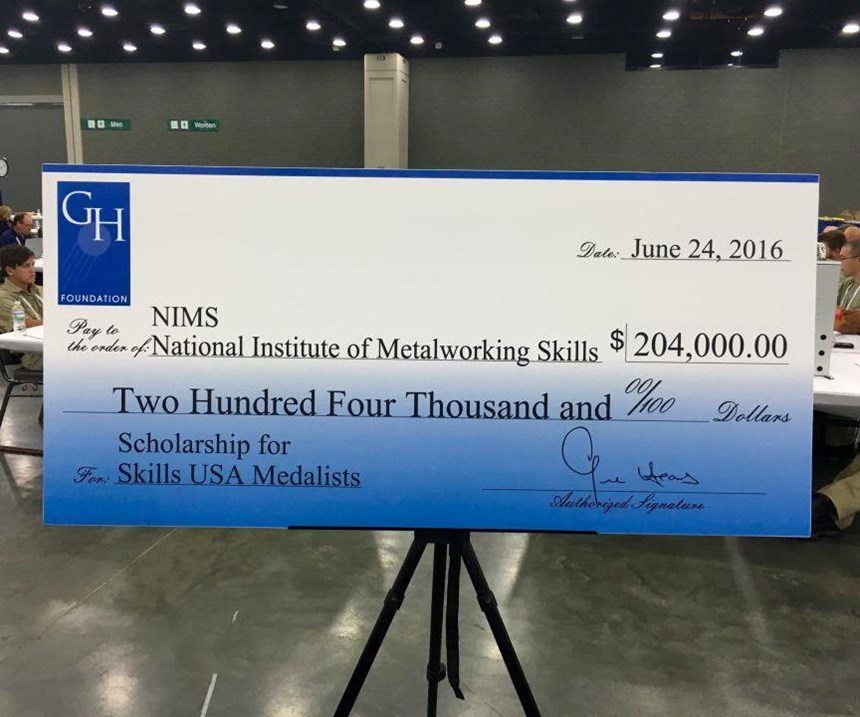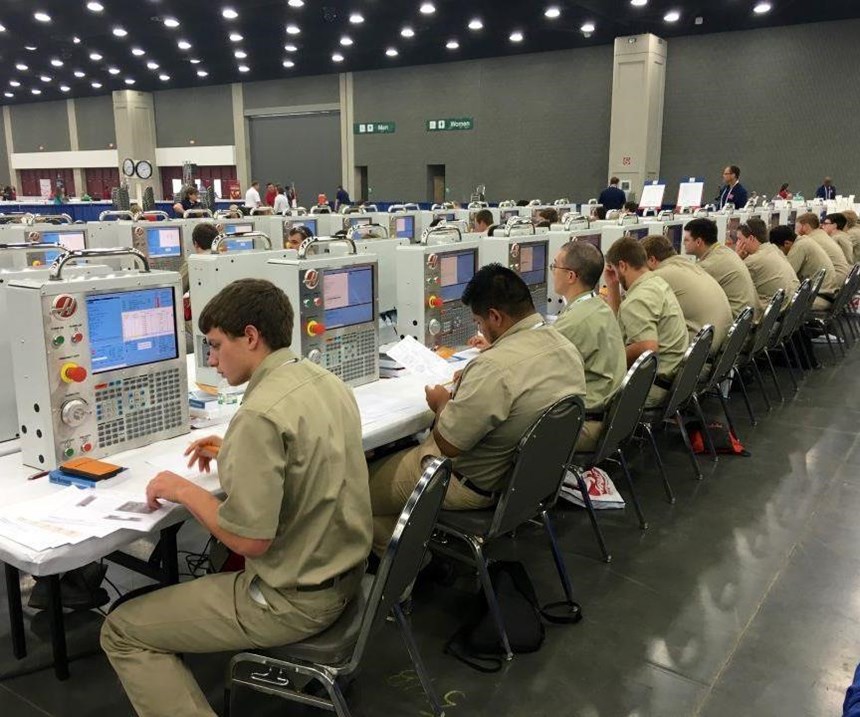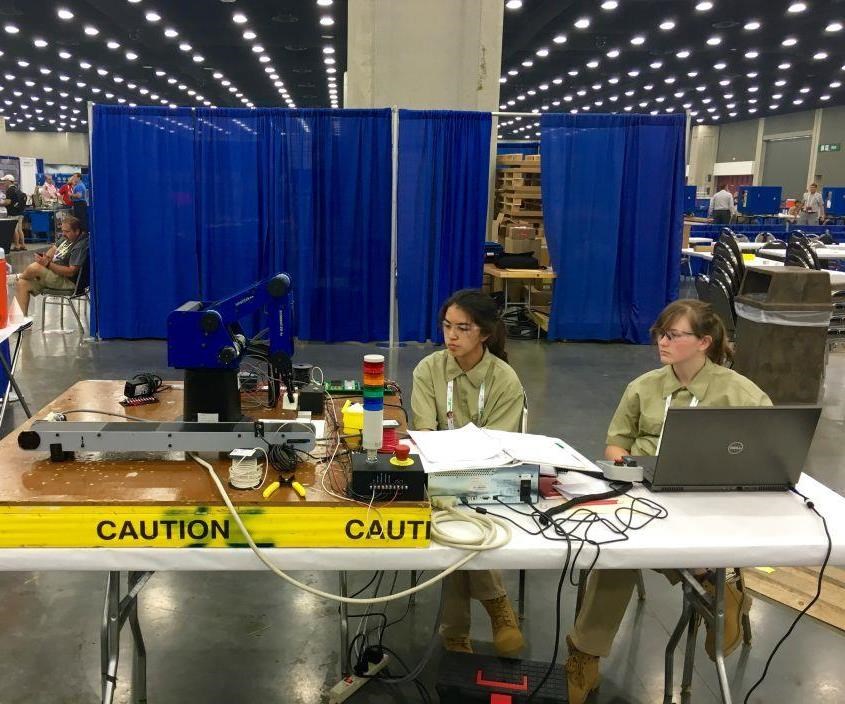It's Time to Educate the Next Generation–Manufacturing Competitions Receive Support from Companies at SkillsUSA
The depiction of manufacturing jobs as dirty and undesirable may soon be a thing of the past. How are manufacturing companies showing their interest in getting more students into the field?
Without the chance to see for themselves what a job in the manufacturing sector could hold, many young people like myself (I’m 16 and completing an internship at Gardner Business Media this summer) are said to be turning their heads away from the industry entirely. According to the 2015 Skills Gap survey conducted by The Manufacturing Institute and Deloitte, “only 37 percent of respondents in the 2015 study indicated they would encourage their children to pursue a manufacturing career,” even though most respondents agreed that manufacturing is essential to our national economy.
The prevailing perception of dirty, undesirable manufacturing jobs has harmed the desire of students to pursue an education in these sectors. Recent activities by manufacturing companies at this year’s SkillsUSA competition, however, indicate that by promoting their industry they can have a positive influence on the career decisions of today’s youth.
In other words, there is hope for the manufacturing industry, and an improved perception of the skilled engineering workforce may soon engage a new generation of inspired young college graduates interested in being a part of modernized machining.
Attendees to this year’s SkillsUSA competition in Louisiville, Kentucky, may have noticed this change in action, especially in the manufacturing competitions. As a trade, manufacturing, both additive and subtractive, dominated the four-day long event in terms of monetary support and vendor representation.
I had the opportunity to attend the championship competitions at the skills conference, and I noticed that companies like Haas and Stratasys wanted the students to have the best equipment to demonstrate their skills in additive and subtractive manufacturing.
At SkillsUSA, the manufacturing and machining trades competed in skill-based competitions like metalworking, programming in G code, robotics, 3D printing, automation, CNC milling and CNC turning, to name a few. For instance, one automation competition consisted of programming a robotic arm to pick up and deposit blocks on a conveyer belt whereas one of the G-coding competitions consisted of using a CNC control to graphically create a usable code to mill a part. The majority of competitors were in high school or college, but I was surprised to hear that the youngest competitor was 13 and the oldest was 73.
On top of donating equipment for these competitions, several manufacturing companies were incentivizing competitors in the trades they were involved by offering monetary scholarships to the winners of these skill areas. As a generous donation to the competitions as a whole, the National Institute of Metalworking Skills (NIMS) donated a prize of $204,000 to SkillsUSA medalists.
Manufacturing companies are realizing that the next generation of engineers and manufacturers can’t be ignored–students must be incentivized and empowered. At SkillsUSA, these companies showed that they understand the importance of stimulating a new generation.
Because of the support from manufacturing companies at SkillsUSA, students like me can see the promise of a manufacturing career.
Max Egan will be a junior at Turpin High School in Cincinnati, Ohio this fall, where he is involved in cross country, track, student council and choir. His favorite part about the internship has been the opportunity to explore the applications of manufacturing and engineering in the real world through field trips and research. When Max graduates and moves on to college, he hopes to use the skills he has learned over the summer to form the foundation for a major in mechanical or environmental engineering and delve deeper into the science of sustainability.
Related Content
Solve Worker Shortages With ACE Workforce Development
The America’s Cutting Edge (ACE) program is addressing the current shortage in trained and available workers by offering no-cost online and in-person training opportunities in CNC machining and metrology.
Read More8 Ways to Increase Productivity on the Manufacturing Floor
When it comes to machine shop productivity, continuous improvement depends on efficient employees, equipment and processes.
Read MoreWill the “Great Resignation” Become an Opportunity for Manufacturers? Get Ready for the Returning 3 Million
The Great Resignation will become a Great Reapplication when employees currently able to stay out of the workforce return to it looking for something better. Machining employers that are already evaluating candidates for fit, without demanding specific skills coming in, might be positioned well to draw upon this wave.
Read MoreA Career at the Top Helps Rebuild a Job Shop
A new approach to management propels expansion into Swiss-type and multitasking machining work.
Read MoreRead Next
The Cut Scene: The Finer Details of Large-Format Machining
Small details and features can have an outsized impact on large parts, such as Barbco’s collapsible utility drill head.
Read More3 Mistakes That Cause CNC Programs to Fail
Despite enhancements to manufacturing technology, there are still issues today that can cause programs to fail. These failures can cause lost time, scrapped parts, damaged machines and even injured operators.
Read More













.png;maxWidth=300;quality=90)















